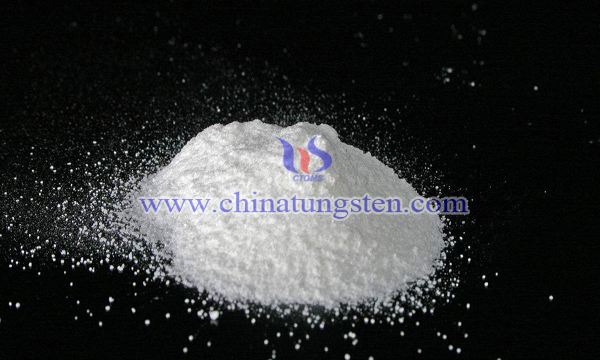Bismuth Tungstate-Molybdenum Disulfide-Graphene Composite Photocatalyst
- Details
- Category: Tungsten Information
- Published on Sunday, 08 September 2019 22:54
With the rapid development of global industrial technology, environmental pollution has become increasingly serious, which has caused immeasurable harm to people's health and life. Therefore, photocatalytic technology has developed rapidly in recent years. Semiconductor catalysts have attracted extensive attention of scientists for their advantages of simple preparation, low energy consumption and fast degradation.

The preparation steps of bismuth tungstate-molybdenum disulfide-graphene composite photocatalyst are as follows:
(1)Graphite oxide was dissolved in deionized water and dispersed into graphene oxide by ultrasonic for 3 hours to obtain graphene oxide dispersion solution. Sodium molybdate and thiourea with molar ratio of 1:5 were dispersed in deionized water and treated by ultrasonic for 15 minutes to make the dispersion uniform, then added to graphene oxide dispersion solution and stirred for 30 minutes. Mixed solution was obtained by hydrothermal reaction at 210 ~℃ for 24 hours, natural cooling to room temperature and centrifugal separation. The samples were washed with deionized water, then washed with ethanol, and then dried at 80 ~℃ for 12 hours to obtain molybdenum disulfide/graphene nanocomposites. Among them, the amount of graphite oxide was graphite oxide: sodium molybdate = 1:9-45;
(2)Sodium tungstate and bismuth nitrate with molar ratio of 1:2 were dispersed in deionized water and ethylene glycol respectively, treated by ultrasound for 15 minutes, then mixed and stirred for 2 hours. Molybdenum disulfide-graphene nanocomposites prepared by step (1) were dissolved in ethanol-ionized water mixed solution, and dispersed evenly and slowly after 15 minutes of ultrasonic treatment. Bismuth tungstate-molybdenum disulfide-melene nanocomposites were prepared by adding sodium tungstate and bismuth nitrate into the mixed solution, stirring for 2 hours, hydrothermal reaction at 180 ℃ for 10 hours, natural cooling to room temperature, centrifugal separation, deionization water washing, ethanol washing and drying at 80 ℃ for 12 hours.
Compared with traditional catalysts such as titanium dioxide and zinc oxide, molybdenum disulfide/graphene as co-catalyst and bismuth tungstate composite not only has excellent photocatalytic performance under ultraviolet light but also under visible light. It can make full use of solar energy and has high photocatalytic efficiency.
- Tungsten Oxide Manufacturer & Supplier, Chinatungsten Online: www.tungsten-oxide.com
- Tungsten News & Prices of China Tungsten Industry Association: www.ctia.com.cn
- Molybdenum News & Price: news.molybdenum.com.cn
- Tel.: 86 592 5129696; Fax: 86 592 5129797; Email: sales@chinatungsten.com



 sales@chinatungsten.com
sales@chinatungsten.com